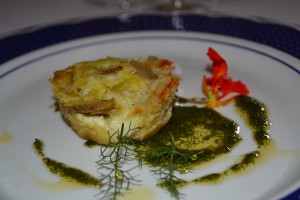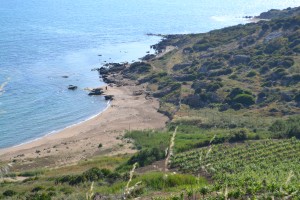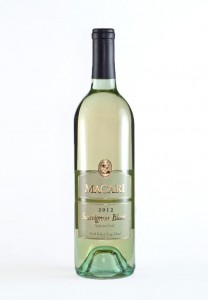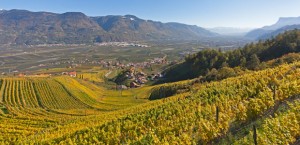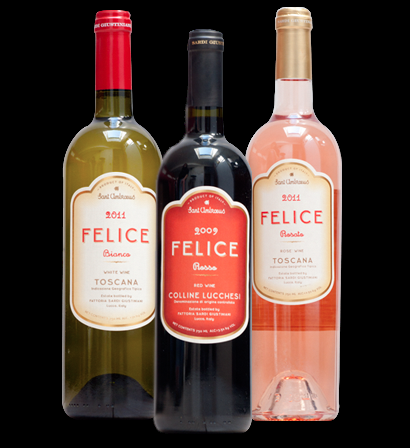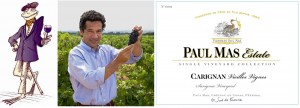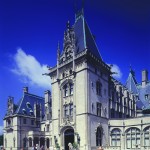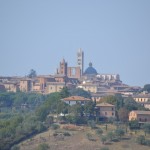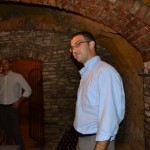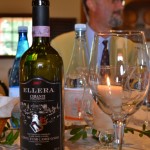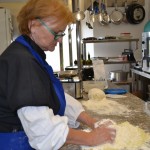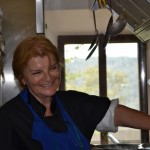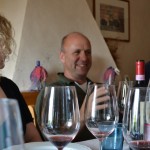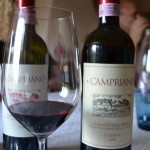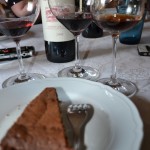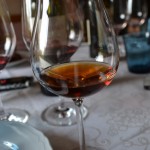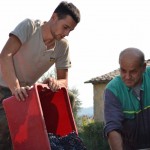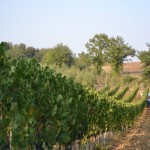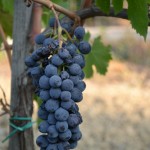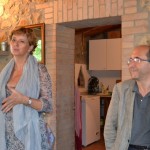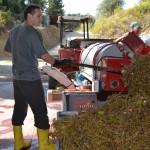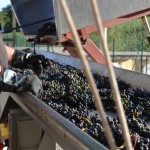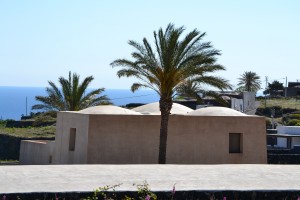 The next day, fighting off jetlag and a general lack of sleep, I struggled out of bed early (5:30 AM) to meet Laura Ellwanger from Donnafugata’s Public Relations department. That morning, Laura and I flew further afield (closer to Africa than to Italy) to another Sicilian island – Pantelleria, joined on our early morning flight by the daily newspapers. But, while the news may arrive a bit late, this sybaritic slice of paradise has long attracted the well-heeled with their well-endowed pocketbooks – including Armani who arrives each summer via private yacht – in stark contrast to Favignana’s laid-back tourists.
The next day, fighting off jetlag and a general lack of sleep, I struggled out of bed early (5:30 AM) to meet Laura Ellwanger from Donnafugata’s Public Relations department. That morning, Laura and I flew further afield (closer to Africa than to Italy) to another Sicilian island – Pantelleria, joined on our early morning flight by the daily newspapers. But, while the news may arrive a bit late, this sybaritic slice of paradise has long attracted the well-heeled with their well-endowed pocketbooks – including Armani who arrives each summer via private yacht – in stark contrast to Favignana’s laid-back tourists.
Also unlike Favignana, Pantelleria has a more continuous vinous history. Here, vines commonly average 40-50 years old, with a few remaining ungrafted vines thought to be over 100 years old as I saw at Donnafugata’s vineyards. Initially arriving on Pantelleria in 1989, Donnafugata now owns vineyards in 12 districts on the island, totaling close to 70 hectares (170 acres).
In addition to vines, the island is also known for its capers and, since I had never seen a caper bush, Laura made sure to take me to a caper garden, which was a treat to see. Interestingly, in terms of cuisine, this is not an island of fisherman, as Pantelleria’s rocky coastline makes it challenging to easily put boats in and out of the water. Consequently, fresh fish is less abundant here. However, rabbits are quite plentiful and often find their way onto the menu.
Home to even fiercer winds, Pantelleria’s Arabic -derived name means “Daughter of the Wind,” and its vines are also alberello trained. This practice has been adapted to olive and citrus trees on the island, with dwarf-like orchards dotting the landscape.
Another feature of the landscape are walls made from dark, volcanic stones that line the narrow roadways, define property borders and undoubtedly gave rise to the island’s nickname as the Black Pearl of the Mediterranean. The stacked stones revealed a patchwork of plots, stemming from very fragmented land ownership, and some seemed to have been abandoned given the overgrown vegetation, possibly due to their exceedingly small size.
 But beyond their proprietary function, these walls protect the grapes from the whipping winds and reduce erosion while their composition of pumice and lava release much-needed humidity during the heat of the day. These same stones were used to build a Pantellerian Garden, the oldest evidence of which date to 3000 B.C.E. As they do in the vineyard, the stones of these circular enclosures give off sufficient moisture to sustain a centrally-planted orange tree despite the limited rainfall and lack of irrigation. Such gardens are a mark of wealth and prestige, but also hold the promise as to how such technology might be adapted in other rain-starved climates, which is why the winery has donated its garden to the National Trust for Italy (F.A.I.) and collaborated on a study with the University of Milan.
But beyond their proprietary function, these walls protect the grapes from the whipping winds and reduce erosion while their composition of pumice and lava release much-needed humidity during the heat of the day. These same stones were used to build a Pantellerian Garden, the oldest evidence of which date to 3000 B.C.E. As they do in the vineyard, the stones of these circular enclosures give off sufficient moisture to sustain a centrally-planted orange tree despite the limited rainfall and lack of irrigation. Such gardens are a mark of wealth and prestige, but also hold the promise as to how such technology might be adapted in other rain-starved climates, which is why the winery has donated its garden to the National Trust for Italy (F.A.I.) and collaborated on a study with the University of Milan.
The garden is situated in Khamma where Donnafugata maintains a winery, necessary since production of its Ben Ryé, with its prestigious Passito di Pantelleria DOP, must be completed entirely on the island. The labor-intensive harvest is quite protracted spanning six weeks from beginning to end as different plots become ripe and ready for harvest in turn. Selected grapes are dried on mats in the sun and wind for three to four weeks, during which time they lose moisture and increase intensity and sugar levels. Others are picked a month later and pressed immediately, with the dried grapes destemmed by hand and then added to the this fermenting must in batches, resulting in a luscious dessert wine with sufficient freshness. Yields are extremely low at 1.6-2.4 tons per acre (4.0-6.0 tons per hectare).
The winery’s other prized Zibibbo grapes are vinified on the island to produce Kabir, a Moscato di Pantelleria DOP, while the younger grapes are sent to Marsala to make Lighea, a dry and refreshing wine that carries the IGP Terre Siciliane designation.
Tasting this latter wine at Khamma, I fantasized about enjoying it on the deck of a dammuso, a Pantellerian traditional white-domed house, while on holiday, but alas, it was once again time to return to the mainland.
But, the Rallo family, which owns Donnafugata, is known for much more than its award winning Ben Ryé Passito di Pantelleria and has been in the wine industry for much longer than their time on Pantelleria. As early as 1851, the family first produced the Italian fortified wine, Marsala, where their winery is located. But, as the reputation of Marsala waned (as did much of its quality), Giacomo and Gabriella Rallo looked for other ways to better show off the potential of the Sicilian island. Taking a new approach, they chose to plant international grape varieties on the family’s estate in Contessa Entellina and launched the Donnafugata wine brand, borrowing the name from Giuseppe Tomasi di Lampedusa’s book, Il Gattopardo (The Leopard), which takes place on Sicily.
During my visit, I had the pleasure of dining with both of Giacomo and Gabriella’s children — Josè and Antonio. One night, Antonio shared some of the family history with me, noting that one of the initial challenges was to teach the vineyard workers how to grow vines for the production of quality wine when they had been conditioned to grow solely for quantity. To solve this problem, the workers were given an opportunity to taste the wines side by side so that they would see what the impact of quality vineyard practices would have on the finished wine.
Once Donnafugata’s reputation with international varieties was established, the family turned its attention to local grapes. Today, the company grows 49 different varieties and is working on another project with the University of Milan to identify the best clones among the indigenous Sicilian varieties such as Cataratto.
The concerted effort and continued emphasis on quality is significant in its impact. In 1994, only 20% of all wine produced in Sicily was bottled in the region – the rest left in bulk. Today, 70% of wine produced within the region is bottled as Sicilian wine. But, Antonio was quick to point out that such progress is the result of many small families working together. Recognizing their shared interest and common goals, a formal group was created in 1998 with an eye toward crafting quality and changing the image of Sicilian wine.

